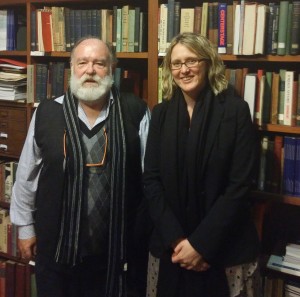The Urgent Need for Improving Asian Literacy in Australia – the Case of Indonesia
Dr David Reeve, a former diplomat, now a Sydney-based academic, has for many years been energetically encouraging the study of Indonesian in Australia. A talk he gave at Glover Cottages on Tuesday 21 July illustrates how important and urgent the task is in helping us to understand and get along better with our nearest Asian neighbour. He was assisted in his presentation by Dr Kirrillee Hughes, Deputy Director of Indonesian Affairs at UNSW. David’s brainchild is the Australian Consortium for in-country Indonesian Studies. Reflecting Julie Bishop’s reverse Colombo Plan initiative, ACICIS sends groups of young Australians to study in Indonesia. In flexible immersion courses, they go as a group and work side by side with Indonesian students, studying among other things Islamic business law, development studies, field studies, agriculture, food science. Total immersion in Indonesian society reflects the exuberance of youth and involves such frequent occurrences as falling off motor bikes and having romances. But a unique understanding of Indonesian culture and language emerges from chaotic youthfulness. ‘Asian literacy’ was coined by Dr Stephen Fitzgerald in the 1980s, but efforts by others to achieve it pre-date his clarion call by decades, including by such visionaries as Robert Garran and John Latham and MacMahon Ball in the twenties and thirties. Interest in learning Indonesian in Australia has been through several booms and busts, and is currently in depressing decline, along with most Asian languages including Japanese and Korean. Only Chinese and Spanish are holding up, the majority of students being the offspring of Chinese Australians and Latinos. In Australian schools, just 13 percent of students take a language, of which an even smaller percentage take an Asian language. And only two to three percent of Australian students at secondary and tertiary level study overseas. Indonesia is thirteenth among the list of countries to which they go.
Dr Hughes added the suggestions that despite the depressing statistics, there is another path Australians could take towards Asian literacy – through engaging the wealth of Asian language skills to be found in the broader Australian community outside schools and universities. We need, she said, a circuit-breaker to engage Asian language speakers in the growing immigrant community to teach the non-Asian speaking young. Asian languages, notably Vietnamese and Hindi, are increasingly being spoken in Australian homes. Can we find a way to harness these skills, as well as the energy of the 17,000 Indonesian students studying in Australia, to spread their language among non-Indonesian speakers? The potential has yet to be explored, but the need to do so is imperative.
Report by Richard Broinowski
